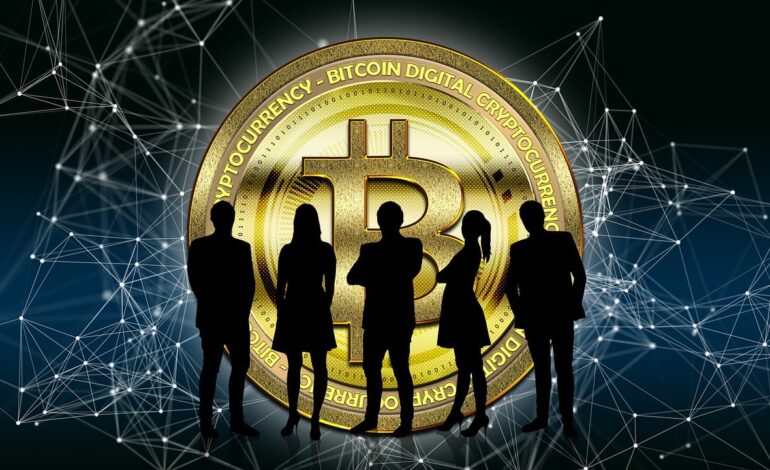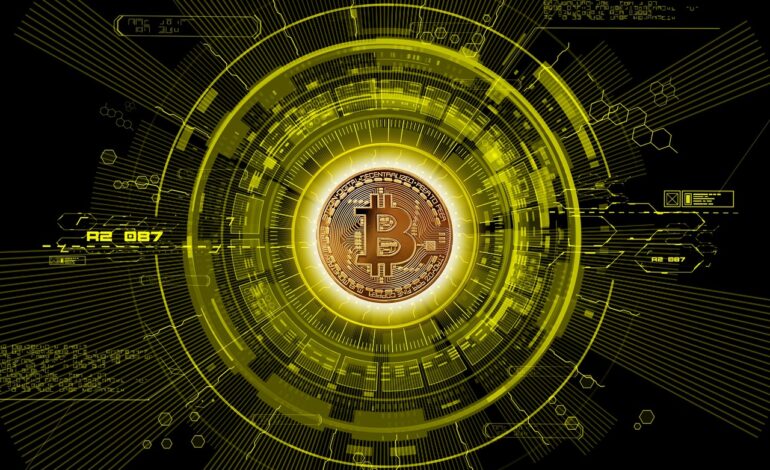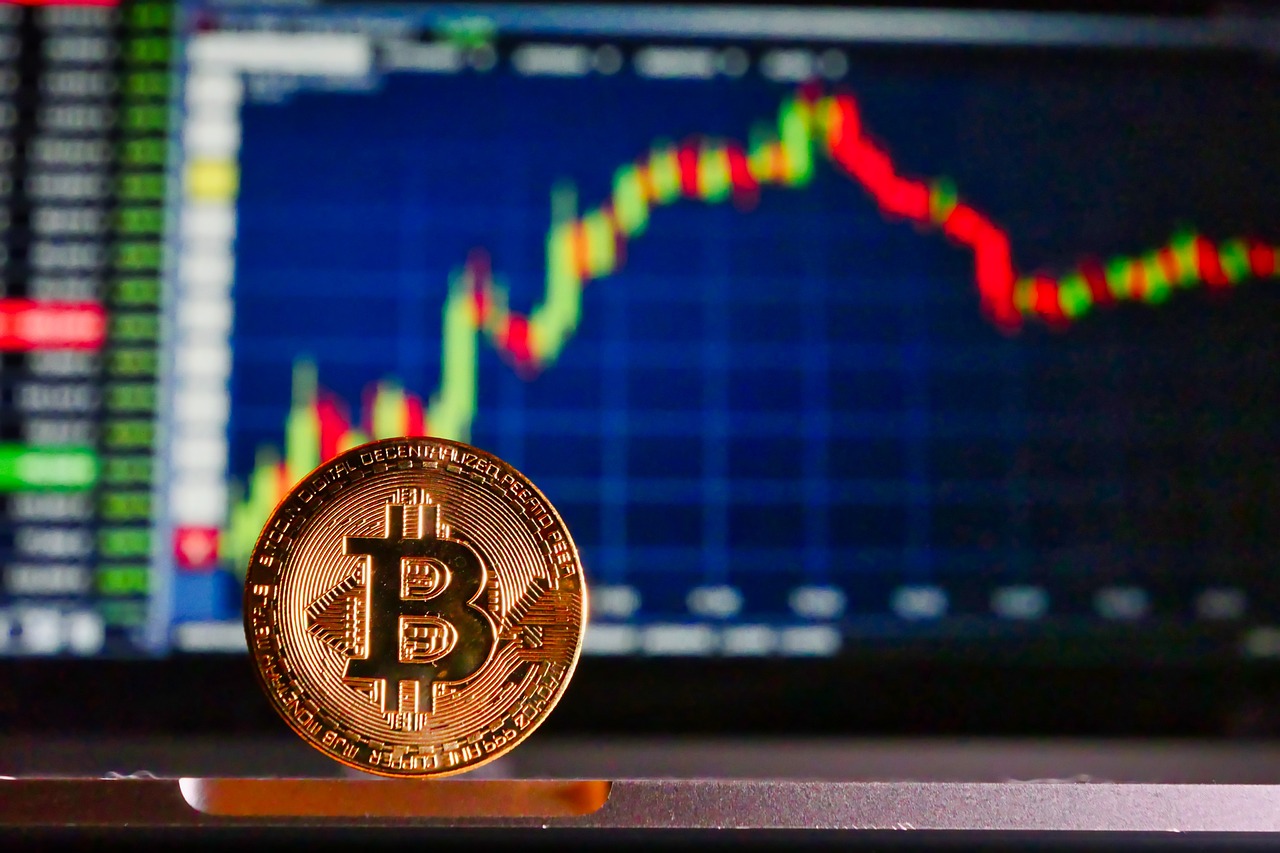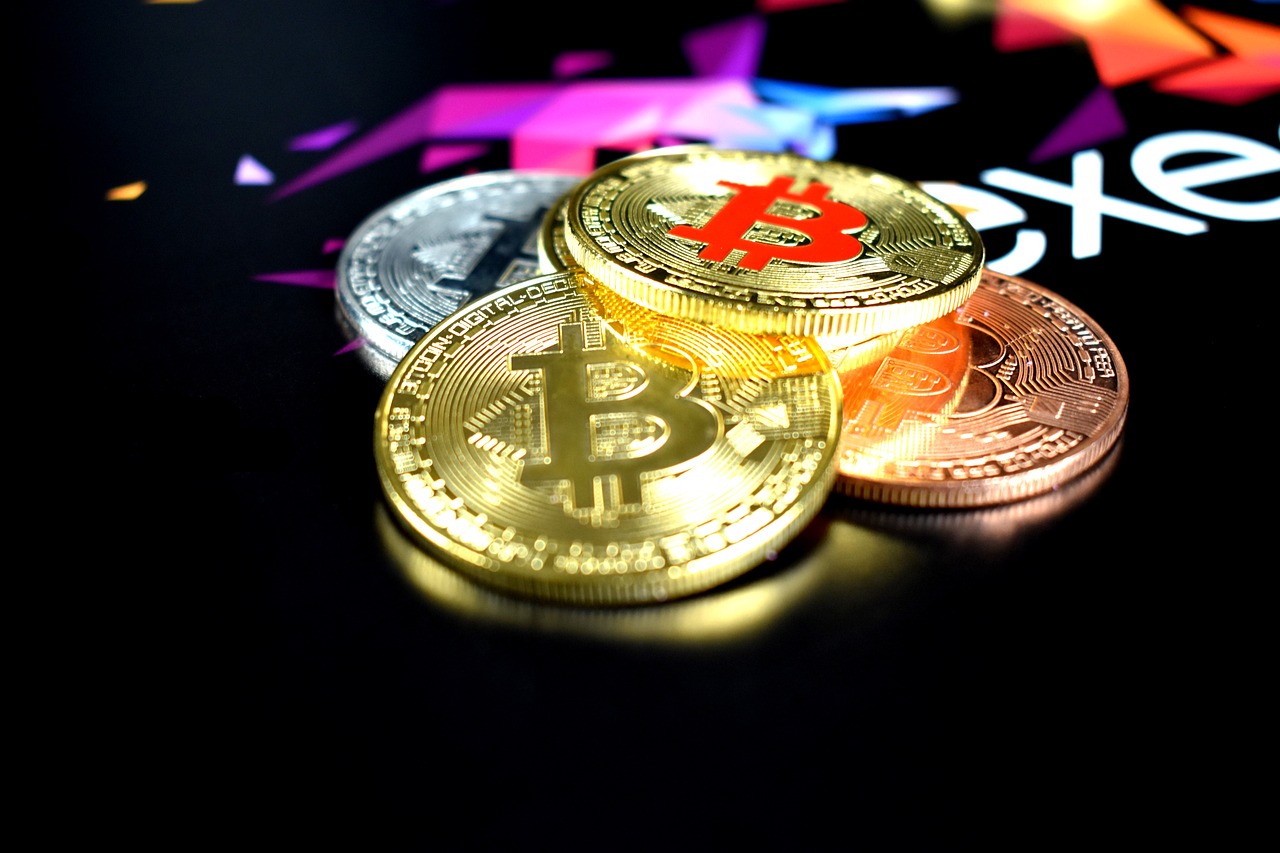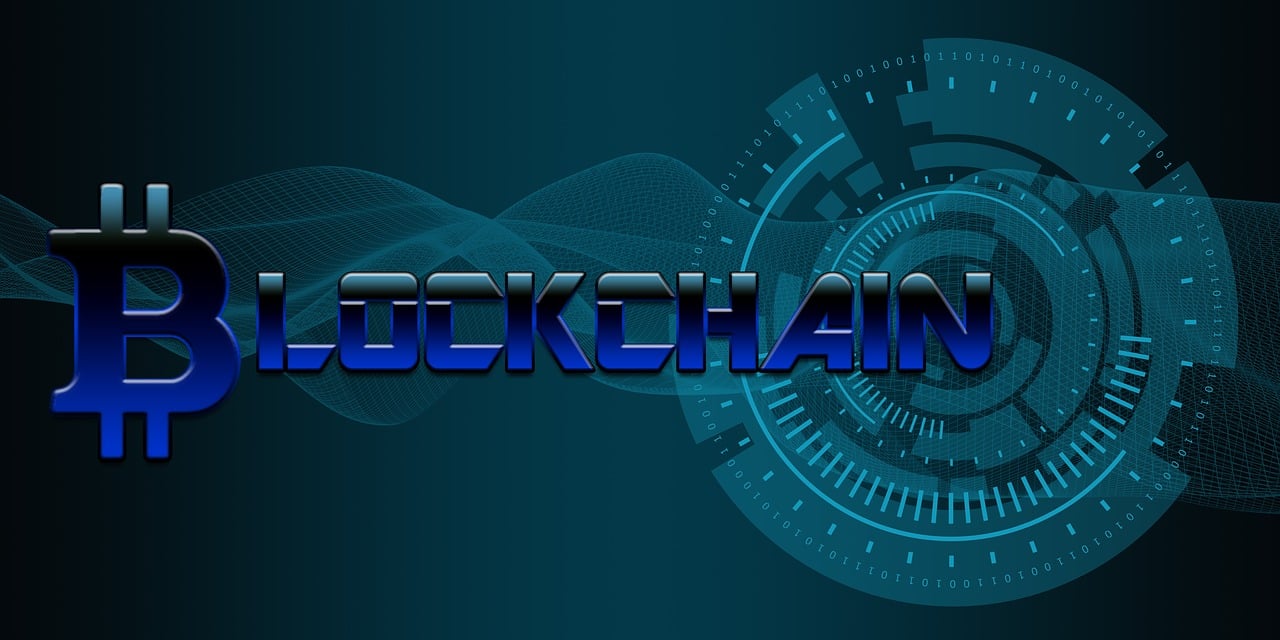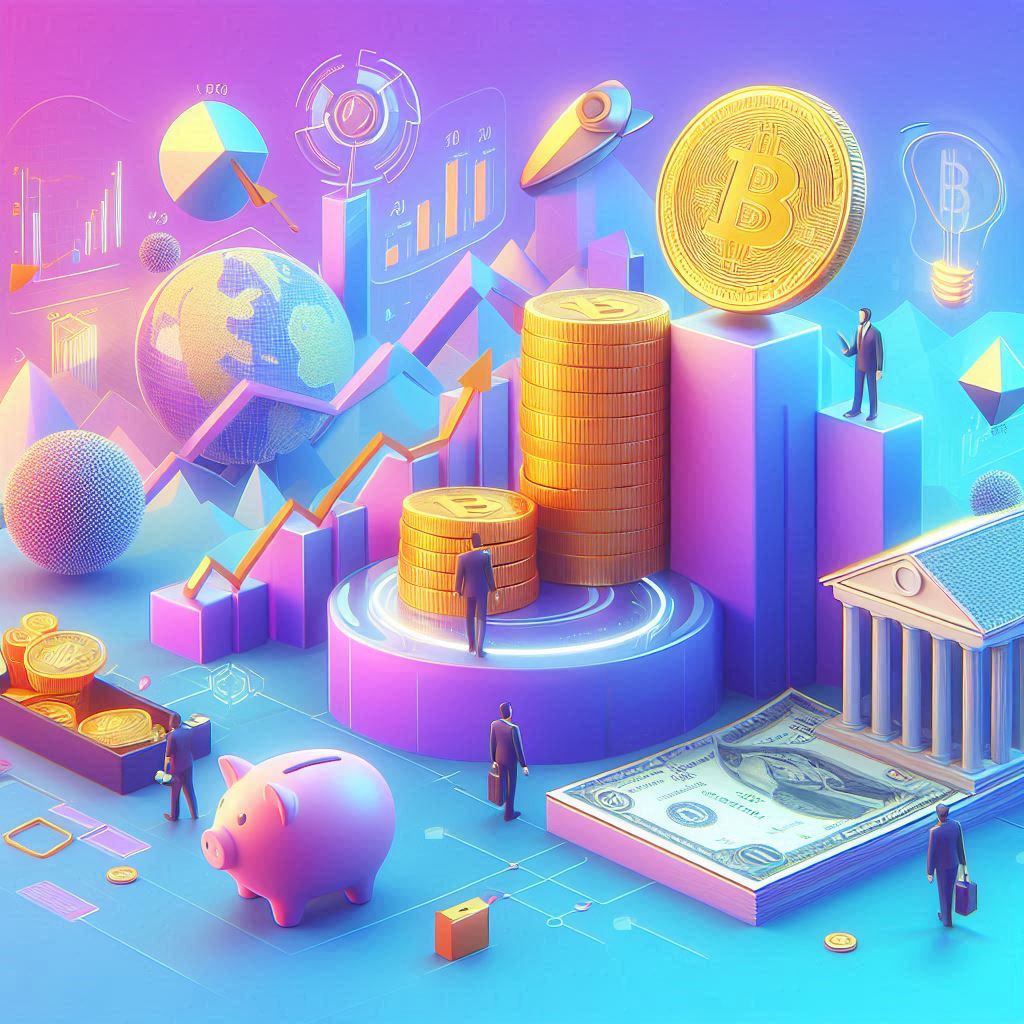Is DeFi the Future of Decentralized Finance?

In recent years, the financial landscape has undergone a significant transformation, with a growing number of individuals seeking alternatives to traditional banking systems. At the forefront of this revolution is DeFi, short for decentralized finance. But what exactly is DeFi, and why is it gaining such widespread attention? This article aims to demystify DeFi, explore its potential, and explain its relevance to you.
Understanding DeFi
DeFi stands for decentralized finance, leveraging blockchain technology to recreate conventional financial services like lending, borrowing, and trading without intermediaries such as banks. At its core, DeFi employs smart contracts—self-executing agreements coded into blockchain—that enable secure and transparent transactions. This eliminates the need for middlemen, resulting in reduced costs and quicker transaction times.
The Role of Blockchain Technology
Blockchain serves as the backbone of DeFi, functioning as a decentralized ledger that records all transactions across a network of computers. Its immutability ensures transparency and security, setting the stage for the emergence of decentralized applications (dApps) that offer financial services directly to users.
Key Benefits of DeFi
1. Accessibility: DeFi stands out for its inclusivity. Unlike traditional finance systems that demand extensive documentation and a solid credit history, DeFi is open to anyone with an internet connection and a digital wallet. This accessibility has the potential to bridge gaps for the unbanked population, granting them access to financial services they previously lacked.
2. Transparency: Every transaction within DeFi is recorded on a public ledger, allowing anyone to verify and audit them. This high level of transparency fosters trust among users, who can track precisely how their funds are used and where they flow.
3. Control: Unlike traditional banking where institutions manage your assets, DeFi empowers individuals to retain full control over their finances. Users hold their funds in digital wallets and determine how to utilize them, whether for earning interest, borrowing, or trading assets, all free from the constraints of traditional banking regulations.
Popular DeFi Applications
- Lending and Borrowing: Platforms such as Aave and Compound facilitate lending and borrowing without intermediaries, providing users with opportunities to earn interest on their assets or obtain loans by collateralizing them.
- Decentralized Exchanges (DEXs): Platforms like Uniswap and SushiSwap enable direct asset trading between users via smart contracts, enhancing transaction speed and reducing costs compared to centralized exchanges.
- Stablecoins: Cryptocurrencies pegged to stable assets (e.g., USDC, DAI) mitigate price volatility, offering the benefits of digital currencies without the inherent risk.
Risks and Challenges
Despite its advantages, DeFi poses risks such as market volatility, smart contract vulnerabilities, and regulatory uncertainties. Understanding these risks is crucial for investors and users alike, ensuring informed decision-making and adherence to best security practices.
The Future of DeFi
The future of DeFi appears promising, driven by ongoing advancements in blockchain technology and increasing adoption rates. Achieving mainstream acceptance will be pivotal, necessitating user-friendly platforms and widespread education. Integration with traditional finance systems could pave the way for a more seamless financial ecosystem that combines the strengths of both worlds.
Conclusion
DeFi represents more than a passing trend—it embodies a paradigm shift in financial management. By offering accessibility, transparency, and control, DeFi has the potential to revolutionize the financial industry. However, navigating this evolving landscape requires caution and continuous awareness of its risks and opportunities.
In summary, while DeFi holds immense promise, informed participation is key to realizing its full potential in reshaping the future of finance.

 Bitcoin
Bitcoin  Ethereum
Ethereum  Tether
Tether  XRP
XRP  Wrapped SOL
Wrapped SOL  USDC
USDC  Lido Staked Ether
Lido Staked Ether  Dogecoin
Dogecoin  TRON
TRON  Cardano
Cardano  Wrapped stETH
Wrapped stETH  Wrapped Bitcoin
Wrapped Bitcoin  Chainlink
Chainlink  Hyperliquid
Hyperliquid  Ethena USDe
Ethena USDe  Wrapped eETH
Wrapped eETH  Stellar
Stellar  Bitcoin Cash
Bitcoin Cash  USDS
USDS  Sui
Sui  Binance Bridged USDT (BNB Smart Chain)
Binance Bridged USDT (BNB Smart Chain)  WETH
WETH  Avalanche
Avalanche  LEO Token
LEO Token  Coinbase Wrapped BTC
Coinbase Wrapped BTC  Litecoin
Litecoin  Hedera
Hedera  USDT0
USDT0  Figure Heloc
Figure Heloc  WhiteBIT Coin
WhiteBIT Coin  Monero
Monero  Shiba Inu
Shiba Inu  Cronos
Cronos  Toncoin
Toncoin  Mantle
Mantle  Ethena Staked USDe
Ethena Staked USDe  Dai
Dai  Polkadot
Polkadot  Zcash
Zcash  MemeCore
MemeCore  Uniswap
Uniswap  Bittensor
Bittensor  World Liberty Financial
World Liberty Financial  OKB
OKB  Aave
Aave  sUSDS
sUSDS  Ethena
Ethena  Bitget Token
Bitget Token  Pepe
Pepe  USD1
USD1  BlackRock USD Institutional Digital Liquidity Fund
BlackRock USD Institutional Digital Liquidity Fund  NEAR Protocol
NEAR Protocol  PayPal USD
PayPal USD  Jito Staked SOL
Jito Staked SOL  Ethereum Classic
Ethereum Classic  Binance-Peg WETH
Binance-Peg WETH  Aptos
Aptos  Ondo
Ondo  Aster
Aster  Jupiter Perpetuals Liquidity Provider Token
Jupiter Perpetuals Liquidity Provider Token  Falcon USD
Falcon USD  Tether Gold
Tether Gold  POL (ex-MATIC)
POL (ex-MATIC)  Worldcoin
Worldcoin  Gate
Gate  USDtb
USDtb  KuCoin
KuCoin  Rocket Pool ETH
Rocket Pool ETH  Arbitrum
Arbitrum  HTX DAO
HTX DAO  Pi Network
Pi Network  Binance Staked SOL
Binance Staked SOL  Internet Computer
Internet Computer  Story
Story  ChainOpera AI
ChainOpera AI  Algorand
Algorand  Kinetiq Staked HYPE
Kinetiq Staked HYPE  Cosmos Hub
Cosmos Hub  StakeWise Staked ETH
StakeWise Staked ETH  VeChain
VeChain  Pump.fun
Pump.fun  Wrapped BNB
Wrapped BNB  Liquid Staked ETH
Liquid Staked ETH  PAX Gold
PAX Gold  Sky
Sky  BFUSD
BFUSD  Syrup USDC
Syrup USDC  Lombard Staked BTC
Lombard Staked BTC  Pudgy Penguins
Pudgy Penguins  Renzo Restaked ETH
Renzo Restaked ETH  Render
Render  Jupiter
Jupiter  Sei
Sei  Official Trump
Official Trump  Binance Bridged USDC (BNB Smart Chain)
Binance Bridged USDC (BNB Smart Chain)  Bonk
Bonk  NEXO
NEXO  Solv Protocol BTC
Solv Protocol BTC  Filecoin
Filecoin  syrupUSDT
syrupUSDT  Immutable
Immutable  Mantle Staked Ether
Mantle Staked Ether  Jupiter Staked SOL
Jupiter Staked SOL  Global Dollar
Global Dollar  SPX6900
SPX6900  PancakeSwap
PancakeSwap  Ripple USD
Ripple USD  Arbitrum Bridged WBTC (Arbitrum One)
Arbitrum Bridged WBTC (Arbitrum One)  clBTC
clBTC  Celestia
Celestia  Optimism
Optimism  Injective
Injective  Lido DAO
Lido DAO  Marinade Staked SOL
Marinade Staked SOL  Stacks
Stacks  DoubleZero
DoubleZero  OUSG
OUSG  Circle USYC
Circle USYC  Superstate Short Duration U.S. Government Securities Fund (USTB)
Superstate Short Duration U.S. Government Securities Fund (USTB)  Curve DAO
Curve DAO  Aerodrome Finance
Aerodrome Finance  Virtuals Protocol
Virtuals Protocol  Plasma
Plasma  FLOKI
FLOKI  Ondo US Dollar Yield
Ondo US Dollar Yield  Ether.Fi Liquid ETH
Ether.Fi Liquid ETH  Stables Labs USDX
Stables Labs USDX  L2 Standard Bridged WETH (Base)
L2 Standard Bridged WETH (Base)  The Graph
The Graph  Humanity
Humanity  Artificial Superintelligence Alliance
Artificial Superintelligence Alliance  tBTC
tBTC  Pyth Network
Pyth Network  Tezos
Tezos  Kaia
Kaia  Sonic
Sonic  Stader ETHx
Stader ETHx  GTETH
GTETH  Arbitrum Bridged WETH (Arbitrum One)
Arbitrum Bridged WETH (Arbitrum One)  IOTA
IOTA  Beldex
Beldex  USDai
USDai  AB
AB  Conflux
Conflux  Ether.fi
Ether.fi  cgETH Hashkey Cloud
cgETH Hashkey Cloud  MYX Finance
MYX Finance  Usual USD
Usual USD  Theta Network
Theta Network  Polygon PoS Bridged DAI (Polygon POS)
Polygon PoS Bridged DAI (Polygon POS)  Polygon Bridged USDC (Polygon PoS)
Polygon Bridged USDC (Polygon PoS)  Pendle
Pendle  dogwifhat
dogwifhat  Coinbase Wrapped Staked ETH
Coinbase Wrapped Staked ETH  Swell Ethereum
Swell Ethereum  Trust Wallet
Trust Wallet  The Sandbox
The Sandbox  Avalanche Bridged BTC (Avalanche)
Avalanche Bridged BTC (Avalanche)  Dash
Dash  Starknet
Starknet  JasmyCoin
JasmyCoin  GALA
GALA  Ethereum Name Service
Ethereum Name Service  Mantle Bridged USDT (Mantle)
Mantle Bridged USDT (Mantle)  Binance-Peg Dogecoin
Binance-Peg Dogecoin  TrueUSD
TrueUSD  BitTorrent
BitTorrent  SwissBorg
SwissBorg  USDD
USDD  ether.fi Staked ETH
ether.fi Staked ETH  Raydium
Raydium  Steakhouse USDC Morpho Vault
Steakhouse USDC Morpho Vault  Decentraland
Decentraland  Arbitrum Bridged Wrapped eETH (Arbitrum)
Arbitrum Bridged Wrapped eETH (Arbitrum)  Aster Staked BNB
Aster Staked BNB  BENQI Liquid Staked AVAX
BENQI Liquid Staked AVAX  Flow
Flow  Jito
Jito  Mantle Restaked ETH
Mantle Restaked ETH  Sun Token
Sun Token  Bitcoin SV
Bitcoin SV  Polygon PoS Bridged WETH (Polygon POS)
Polygon PoS Bridged WETH (Polygon POS)  Synthetix
Synthetix  Satoshi Stablecoin
Satoshi Stablecoin  Maple Finance
Maple Finance  EigenCloud (prev. EigenLayer)
EigenCloud (prev. EigenLayer)  Aethir
Aethir  OriginTrail
OriginTrail  GHO
GHO  AINFT
AINFT  Zora
Zora  ApeCoin
ApeCoin  Vision
Vision  Wrapped HYPE
Wrapped HYPE  AI Companions
AI Companions  Ribbita by Virtuals
Ribbita by Virtuals  Falcon Finance
Falcon Finance  Merlin Chain
Merlin Chain  Fartcoin
Fartcoin  DeXe
DeXe  Spiko EU T-Bills Money Market Fund
Spiko EU T-Bills Money Market Fund  Walrus
Walrus  0G
0G  Savings Dai
Savings Dai  Kinetiq Earn Vault
Kinetiq Earn Vault  Ape and Pepe
Ape and Pepe  Olympus
Olympus  Zebec Network
Zebec Network  Compound
Compound  Helium
Helium  Ethena Staked ENA
Ethena Staked ENA  Unit Bitcoin
Unit Bitcoin  NEO
NEO  Telcoin
Telcoin  ETHPlus
ETHPlus  Reservoir srUSD
Reservoir srUSD  Fluid
Fluid  Wormhole
Wormhole  Treehouse ETH
Treehouse ETH  Gnosis
Gnosis  Loaded Lions
Loaded Lions  AtomOne
AtomOne  Drift Staked SOL
Drift Staked SOL  Reserve Rights
Reserve Rights  Toshi
Toshi  JUST
JUST  Bybit Staked SOL
Bybit Staked SOL  Wrapped AVAX
Wrapped AVAX  Chiliz
Chiliz  Mantle Bridged WETH (Mantle)
Mantle Bridged WETH (Mantle)  Solv Protocol Staked BTC
Solv Protocol Staked BTC  Onyxcoin
Onyxcoin  Binance-Peg BUSD
Binance-Peg BUSD  WEMIX
WEMIX  ARK
ARK  THORChain
THORChain  Legacy Frax Dollar
Legacy Frax Dollar  Cap USD
Cap USD  eCash
eCash  Useless Coin
Useless Coin  EURC
EURC  Resolv USR
Resolv USR  Staked Stream USD
Staked Stream USD  Cognify
Cognify  MultiversX
MultiversX  Polygon Bridged WBTC (Polygon POS)
Polygon Bridged WBTC (Polygon POS)  Decred
Decred  crvUSD
crvUSD  Midas mHYPER
Midas mHYPER  Brett
Brett  Cheems Token
Cheems Token  Axie Infinity
Axie Infinity  Noble USDC
Noble USDC  Stables Labs Staked USDX
Stables Labs Staked USDX  KAITO
KAITO  dYdX
dYdX  Ronin
Ronin  Four
Four  Sui Bridged USDT (Sui)
Sui Bridged USDT (Sui)  Meteora
Meteora  cWBTC
cWBTC  RealLink
RealLink  Terra Luna Classic
Terra Luna Classic  Basic Attention
Basic Attention  Arweave
Arweave  1INCH
1INCH  Berachain
Berachain  SuperVerse
SuperVerse  Blockchain Capital
Blockchain Capital  币安人生 (BinanceLife)
币安人生 (BinanceLife)  Aster USDF
Aster USDF  ZKsync
ZKsync  Keeta
Keeta  Linea
Linea  Resolv wstUSR
Resolv wstUSR  Core
Core  Fidelity Digital Interest Token
Fidelity Digital Interest Token  Livepeer
Livepeer  AIOZ Network
AIOZ Network  Creditcoin
Creditcoin  Plume
Plume  OpenEden OpenDollar
OpenEden OpenDollar  USDa
USDa  MX
MX  Giggle Fund
Giggle Fund  Slash Vision Labs
Slash Vision Labs  Moca Network
Moca Network  Concordium
Concordium  Saros
Saros  Binance-Peg SOL
Binance-Peg SOL  SoSoValue
SoSoValue  DeepBook
DeepBook  Origin Ether
Origin Ether  Qtum
Qtum  Amp
Amp  Universal BTC
Universal BTC  StandX DUSD
StandX DUSD  Movement
Movement  MetaDAO
MetaDAO  Axelar
Axelar  Compounding OpenDollar
Compounding OpenDollar  Avantis
Avantis  Polygon Bridged weETH (Katana)
Polygon Bridged weETH (Katana)  SOON
SOON  Legacy Token
Legacy Token  SafePal
SafePal  Kinesis Gold
Kinesis Gold  Tradable NA Rent Financing Platform SSTN
Tradable NA Rent Financing Platform SSTN  Kinesis Silver
Kinesis Silver  Kamino
Kamino  Drift Protocol
Drift Protocol  Theta Fuel
Theta Fuel  LayerZero
LayerZero  Arkham
Arkham  Convex Finance
Convex Finance  Succinct
Succinct  Kusama
Kusama  Ecoreal Estate
Ecoreal Estate  Dog (Bitcoin)
Dog (Bitcoin)  Rekt
Rekt  Cronos Bridged USDC (Cronos)
Cronos Bridged USDC (Cronos)  Mog Coin
Mog Coin  Nexus Mutual
Nexus Mutual  Sahara AI
Sahara AI  Golem
Golem  Sky Coin
Sky Coin  Phantom Staked SOL
Phantom Staked SOL  Akash Network
Akash Network  Zano
Zano  Qubic
Qubic  Mashida
Mashida  Baby Doge Coin
Baby Doge Coin  BUILDon
BUILDon  Tokenize Xchange
Tokenize Xchange  Super OETH
Super OETH  Prom
Prom  Gas
Gas  cat in a dogs world
cat in a dogs world  Conscious Token
Conscious Token  BTSE Token
BTSE Token  GoMining Token
GoMining Token  Midas mF-ONE
Midas mF-ONE  0x Protocol
0x Protocol  Turbo
Turbo  KOGE
KOGE  Quantum Resistant Ledger
Quantum Resistant Ledger  Safe
Safe  yearn.finance
yearn.finance  Ether.fi Staked BTC
Ether.fi Staked BTC  InfiniFi USD
InfiniFi USD  APEX
APEX  Ultima
Ultima  Spiko US T-Bills Money Market Fund
Spiko US T-Bills Money Market Fund  YieldFi yToken
YieldFi yToken  MAG7.ssi
MAG7.ssi  Nervos Network
Nervos Network  Ravencoin
Ravencoin  Zilliqa
Zilliqa  AgentFun.AI
AgentFun.AI  Infrared Bera
Infrared Bera  Crypto.com Staked ETH
Crypto.com Staked ETH  Bio Protocol
Bio Protocol  Metal Blockchain
Metal Blockchain  Popcat
Popcat  Elixir deUSD
Elixir deUSD  Kava
Kava  GUSD
GUSD  Stargate Finance
Stargate Finance  TDCCP
TDCCP  BitMart
BitMart  CoinEx
CoinEx  Wrapped Aave Ethereum WETH
Wrapped Aave Ethereum WETH  Celo
Celo  Lombard
Lombard  Euler
Euler  Staked USDai
Staked USDai  Sui Bridged WBTC (Sui)
Sui Bridged WBTC (Sui)  VVS Finance
VVS Finance  STASIS EURO
STASIS EURO  AWE Network
AWE Network  XPR Network
XPR Network  Astar
Astar  Velo
Velo  UCHAIN
UCHAIN  StarkGate Bridged USDC (Starknet)
StarkGate Bridged USDC (Starknet)  Restaking Vault ETH
Restaking Vault ETH  Function FBTC
Function FBTC  Stargate Bridged WETH
Stargate Bridged WETH  Threshold Network
Threshold Network  Shuffle
Shuffle  AUSD
AUSD  Unit Plasma
Unit Plasma  Peanut the Squirrel
Peanut the Squirrel  Grass
Grass  Unibase
Unibase  Avalanche Bridged WETH (Avalanche)
Avalanche Bridged WETH (Avalanche)  cETH
cETH  River
River  Blur
Blur  KUB Coin
KUB Coin  Mina Protocol
Mina Protocol  Theo Short Duration US Treasury Fund
Theo Short Duration US Treasury Fund  Unit Pump
Unit Pump  Wrapped Aave Ethereum USDC
Wrapped Aave Ethereum USDC  DeAgentAI
DeAgentAI  ZIGChain
ZIGChain  MANTRA
MANTRA  Apollo Diversified Credit Securitize Fund
Apollo Diversified Credit Securitize Fund  Hyperbeat USDT
Hyperbeat USDT  Railgun
Railgun  Metaplex
Metaplex  XPIN Network
XPIN Network  Yala Stablecoin
Yala Stablecoin  Frax (prev. FXS)
Frax (prev. FXS)  Oasis
Oasis  WeFi
WeFi  4
4  Wrapped Savings rUSD
Wrapped Savings rUSD  Verus
Verus  Renzo Restaked LST
Renzo Restaked LST  Resolv Liquidity Provider Token
Resolv Liquidity Provider Token  Avant USD
Avant USD  CoW Protocol
CoW Protocol  Ozone Chain
Ozone Chain  Moonwell Flagship ETH (Morpho Vault)
Moonwell Flagship ETH (Morpho Vault)  Stargate Bridged USDC
Stargate Bridged USDC  Gems VIP
Gems VIP  Rollbit Coin
Rollbit Coin  Anoma
Anoma  Frax USD
Frax USD  PayFi Strategy Token USDC
PayFi Strategy Token USDC  Centrifuge
Centrifuge  Moo Deng
Moo Deng  DFDV Staked SOL
DFDV Staked SOL  Wrapped Aave Ethereum USDT
Wrapped Aave Ethereum USDT  DOLA
DOLA  VeThor
VeThor  Gaib AI Dollar Alpha USDC
Gaib AI Dollar Alpha USDC  Anzen USDz
Anzen USDz  Minidoge
Minidoge  Siacoin
Siacoin  aelf
aelf  DigiByte
DigiByte  sBTC
sBTC  Avant Staked USD
Avant Staked USD  USDA
USDA  SKALE
SKALE  ORDI
ORDI  GMX
GMX  IoTeX
IoTeX  XYO Network
XYO Network  LCX
LCX  Chutes
Chutes  EthereumPoW
EthereumPoW  Illuvium
Illuvium  Onchain Yield Coin
Onchain Yield Coin  Polymesh
Polymesh  Flare Bridged XRP (Flare)
Flare Bridged XRP (Flare)  UMA
UMA  f(x) Protocol fxUSD
f(x) Protocol fxUSD  Sushi
Sushi  Syndicate
Syndicate  MarsMi
MarsMi  Numeraire
Numeraire  Open Campus
Open Campus  Ankr Network
Ankr Network  Savings xDAI
Savings xDAI  Tradable Singapore Fintech SSL
Tradable Singapore Fintech SSL  Ring USD
Ring USD  HashKey Platform Token
HashKey Platform Token  QL1 Bridged USDT (QL1)
QL1 Bridged USDT (QL1)  ViciCoin
ViciCoin  VaultBridge Bridged WBTC (Katana)
VaultBridge Bridged WBTC (Katana)  Pirate Chain
Pirate Chain  Wrapped Centrifuge
Wrapped Centrifuge  Non-Playable Coin
Non-Playable Coin  RedStone
RedStone  Chia
Chia  f(x) USD Saving
f(x) USD Saving  Orderly
Orderly  Harmony
Harmony  Bitlight
Bitlight  Bless
Bless  Helder
Helder  Memecoin
Memecoin  Bridged Ether (StarkGate)
Bridged Ether (StarkGate)  VaultBridge Bridged ETH (Katana)
VaultBridge Bridged ETH (Katana)  Kraken Wrapped BTC
Kraken Wrapped BTC  BCGame Coin
BCGame Coin  GOHOME
GOHOME  TempleDAO
TempleDAO  Pundi X
Pundi X  Bridged Wrapped stETH (Gnosis)
Bridged Wrapped stETH (Gnosis)  Sologenic
Sologenic  Babylon
Babylon  Api3
Api3  Nano
Nano  Swop
Swop  Band
Band  Novem Pro
Novem Pro  VanEck Treasury Fund
VanEck Treasury Fund  L2 Standard Bridged WETH (Optimism)
L2 Standard Bridged WETH (Optimism)  Yield Guild Games
Yield Guild Games  Cronos Bridged USDT (Cronos)
Cronos Bridged USDT (Cronos)  Lagrange
Lagrange  MNEE USD Stablecoin
MNEE USD Stablecoin  Orca
Orca  Fulcrom
Fulcrom  Nillion
Nillion  OpenLedger
OpenLedger  GMT
GMT  Osmosis
Osmosis  Ridges AI
Ridges AI  Mask Network
Mask Network  AltLayer
AltLayer  Paycoin
Paycoin  Somnia
Somnia  Loopring
Loopring  TROLL
TROLL  Enjin Coin
Enjin Coin  ONFA
ONFA  sUSDa
sUSDa  BitDCA
BitDCA  Ontology
Ontology  Wilder World
Wilder World  Reservoir rUSD
Reservoir rUSD  COTI
COTI  Waves
Waves  Clearpool
Clearpool  Neiro
Neiro  Notcoin
Notcoin  Apro
Apro  Amnis Aptos
Amnis Aptos  staked USD1+
staked USD1+  Melania Meme
Melania Meme  Venus
Venus  Moonwell
Moonwell  Solar
Solar  Vana
Vana  tokenbot
tokenbot  WOO
WOO  EVAA Protocol
EVAA Protocol  Nexpace
Nexpace  Spark
Spark  io.net
io.net  Puff The Dragon
Puff The Dragon  Jelly-My-Jelly
Jelly-My-Jelly  EUR CoinVertible
EUR CoinVertible  Gama Token
Gama Token  Decentralized Social
Decentralized Social  Daku V2
Daku V2  Wiki Cat
Wiki Cat  Felix feUSD
Felix feUSD  BSquared Network
BSquared Network  Omni Network [Old]
Omni Network [Old]  Purr
Purr  Paparazzi Token
Paparazzi Token  BOOK OF MEME
BOOK OF MEME  QuantixAI
QuantixAI  pumpBTC
pumpBTC  aura
aura  BIM
BIM  CASH
CASH  OG Fan Token
OG Fan Token  Degen
Degen  Sui Bridged Ether (Sui)
Sui Bridged Ether (Sui)  Magic Eden
Magic Eden  Rocket Pool
Rocket Pool  Bedrock BTC
Bedrock BTC  Blast
Blast  USDX
USDX  Status
Status  SynFutures
SynFutures  BYUSD
BYUSD  BORA
BORA  Stronghold
Stronghold  Lista DAO
Lista DAO  Mira
Mira  Ronin Bridged WETH (Ronin)
Ronin Bridged WETH (Ronin)  Staked HYPE
Staked HYPE  Tellor Tributes
Tellor Tributes  GIGADOT
GIGADOT  Terra
Terra  Doodles
Doodles  Arbitrum Bridged USDC (Arbitrum)
Arbitrum Bridged USDC (Arbitrum)  IOST
IOST  ai16z
ai16z  Ardor
Ardor  Ventuals vHYPE
Ventuals vHYPE  Hive
Hive  Solv Protocol SolvBTC Jupiter
Solv Protocol SolvBTC Jupiter  Lorenzo Wrapped Bitcoin
Lorenzo Wrapped Bitcoin  Cloud
Cloud  Metis
Metis  Elixir Staked deUSD
Elixir Staked deUSD  COCA
COCA  Staked FRAX
Staked FRAX  Echelon Prime
Echelon Prime  Bancor Network
Bancor Network  B3 (Base)
B3 (Base)  Portal to Bitcoin
Portal to Bitcoin  Balancer
Balancer  Alchemy Pay
Alchemy Pay  Xertra
Xertra  Comedian
Comedian  HarryPotterObamaSonic10Inu (ETH)
HarryPotterObamaSonic10Inu (ETH)  PunkStrategy
PunkStrategy  Big Time
Big Time  SWFTCOIN
SWFTCOIN  Ocean Protocol
Ocean Protocol  HOME
HOME  Constellation
Constellation  Tokenlon
Tokenlon  ARK
ARK  ConstitutionDAO
ConstitutionDAO  iExec RLC
iExec RLC  Powerledger
Powerledger  Ping
Ping  Siren
Siren  Mythos
Mythos  Matrixdock Gold
Matrixdock Gold  Gigachad
Gigachad  SAFEbit
SAFEbit  aixbt
aixbt  Orbs
Orbs  Marinade
Marinade  Solayer Staked SOL
Solayer Staked SOL  NKYC Token
NKYC Token  Pax Dollar
Pax Dollar  Nomina
Nomina  Chromia
Chromia  The Grays Currency
The Grays Currency  Launch Coin on Believe
Launch Coin on Believe  ORCIB
ORCIB  Solayer
Solayer  Whiteheart
Whiteheart  Sophon
Sophon  Celium
Celium  Osaka Protocol
Osaka Protocol  Zedxion
Zedxion  Delysium
Delysium  MVL
MVL  Coinshift USDL Morpho Vault
Coinshift USDL Morpho Vault  Aevo
Aevo  Auki
Auki  Venice Token
Venice Token  Verasity
Verasity  Spell
Spell  Wrapped Aave Plasma USDT0
Wrapped Aave Plasma USDT0  Hemi
Hemi  STBL
STBL  Alchemist AI
Alchemist AI  Honey
Honey  Mezo Wrapped BTC
Mezo Wrapped BTC  Sanctum Infinity
Sanctum Infinity  Geodnet
Geodnet  Bonfida
Bonfida  Caldera
Caldera  BTU Protocol
BTU Protocol  Chintai
Chintai  Bridged Tether (opBNB)
Bridged Tether (opBNB)  Cronos Bridged WBTC (Cronos)
Cronos Bridged WBTC (Cronos)  StraitsX XUSD
StraitsX XUSD  Ika
Ika  Ergo
Ergo  Cookie DAO
Cookie DAO  KGeN
KGeN  Audius
Audius  Magic Internet Money (Ethereum)
Magic Internet Money (Ethereum)  IQ
IQ  Sai
Sai  GeorgePlaysClashRoyale
GeorgePlaysClashRoyale  Chain-key Bitcoin
Chain-key Bitcoin  BUSD
BUSD  Sign
Sign  VNDC
VNDC  Goatseus Maximus
Goatseus Maximus  Boundless
Boundless  MiL.k
MiL.k  Freysa AI
Freysa AI  Songbird
Songbird  Escoin
Escoin  Animecoin
Animecoin  CYBER
CYBER  Bounce
Bounce  GAL (migrated to Gravity - G)
GAL (migrated to Gravity - G)  PYTHIA
PYTHIA  OKZOO
OKZOO  Holoworld
Holoworld  CJournal
CJournal  Gravity (by Galxe)
Gravity (by Galxe)  Definitive
Definitive  BankrCoin
BankrCoin  Targon
Targon  SEDA
SEDA  Kyber Network Crystal
Kyber Network Crystal  BLOCKv
BLOCKv  BounceBit
BounceBit  Tokamak Network
Tokamak Network  YZY
YZY  Manta Network
Manta Network  Hivemapper
Hivemapper  ZEROBASE
ZEROBASE  dKargo
dKargo  Liquity
Liquity  Quack AI
Quack AI  SATS (Ordinals)
SATS (Ordinals)  Secret
Secret  Zentry
Zentry  Hex Trust USD
Hex Trust USD  ChangeNOW
ChangeNOW  ChainGPT
ChainGPT  LOOK
LOOK  Ontology Gas
Ontology Gas  DIA
DIA  Shentu
Shentu  Sygnum FIUSD Liquidity Fund
Sygnum FIUSD Liquidity Fund  Banana Gun
Banana Gun  R0AR Token
R0AR Token  VeraOne
VeraOne  Flux
Flux  Steakhouse ETH Morpho Vault
Steakhouse ETH Morpho Vault  Arcblock
Arcblock  Overnight.fi USD+
Overnight.fi USD+  Noble Dollar (USDN)
Noble Dollar (USDN)  PHALA
PHALA  FLOCK
FLOCK  Mountain Protocol USD
Mountain Protocol USD  Gemini Dollar
Gemini Dollar  Coinbase Wrapped XRP
Coinbase Wrapped XRP  BOLD
BOLD  Marlin
Marlin  Steem
Steem  Rootstock Infrastructure Framework
Rootstock Infrastructure Framework  Energy Web
Energy Web  CREPE
CREPE  SPACE ID
SPACE ID  TokenPocket Token
TokenPocket Token  StorX
StorX  Vine
Vine  Universal ETH
Universal ETH  Tornado Cash
Tornado Cash  WAX
WAX  Cartesi
Cartesi  TerraClassicUSD
TerraClassicUSD  Across Protocol
Across Protocol  Wrapped NXM
Wrapped NXM  JOE
JOE  Huma Finance
Huma Finance  CARV
CARV  Rujira
Rujira  Wrapped XRP
Wrapped XRP  Anvil
Anvil  Moonwell Flagship USDC (Morpho Vault)
Moonwell Flagship USDC (Morpho Vault)  Sonic SVM
Sonic SVM  Usual ETH
Usual ETH  Ekubo Protocol
Ekubo Protocol  VaultBridge Bridged USDC (Katana)
VaultBridge Bridged USDC (Katana)  Treasure
Treasure  sETH
sETH  Apertum
Apertum  Renzo
Renzo  APX
APX  Cross
Cross  TAGGER
TAGGER  WorldAssets
WorldAssets  Bifrost
Bifrost  Metal DAO
Metal DAO  Uranus
Uranus  DORA
DORA  Dent
Dent  DarkStar
DarkStar  QANplatform
QANplatform  Solidus Ai Tech
Solidus Ai Tech  OVERTAKE
OVERTAKE  Synthetix sUSD
Synthetix sUSD  Acet
Acet  Lisk
Lisk  Smooth Love Potion
Smooth Love Potion  A Hunters Dream
A Hunters Dream  Ondo U.S. Dollar Token
Ondo U.S. Dollar Token  Bertram The Pomeranian
Bertram The Pomeranian  ResearchCoin
ResearchCoin  Ore
Ore  Electroneum
Electroneum  Bridged Tether (Linea)
Bridged Tether (Linea)  Avalanche Bridged WBTC (Avalanche)
Avalanche Bridged WBTC (Avalanche)  MetYa
MetYa  Beets Staked Sonic
Beets Staked Sonic  Hippo Protocol
Hippo Protocol  Savings crvUSD
Savings crvUSD  Austin Capitals
Austin Capitals  Corn
Corn  Dymension
Dymension  Metronome Synth ETH
Metronome Synth ETH  Dogelon Mars
Dogelon Mars  Huobi
Huobi  Liquid HYPE Yield
Liquid HYPE Yield  Yield Optimizer ETH
Yield Optimizer ETH  Binance-Peg DAI
Binance-Peg DAI  Cetus Protocol
Cetus Protocol  Yield Basis
Yield Basis  Luckify
Luckify  Akedo
Akedo  Hyperlane
Hyperlane  ECOMI
ECOMI  Hyperbeat LST Vault
Hyperbeat LST Vault  Bit2Me
Bit2Me  Cobak
Cobak  Victoria VR
Victoria VR  BurnedFi
BurnedFi  Nobody Sausage
Nobody Sausage  PinkSale
PinkSale  Dialectic USD Vault
Dialectic USD Vault  XT.com
XT.com  Liqwid Finance
Liqwid Finance  Bridged Wrapped Bitcoin (StarkGate)
Bridged Wrapped Bitcoin (StarkGate)  StakeStone
StakeStone  Avalanche Bridged USDC (Avalanche)
Avalanche Bridged USDC (Avalanche)  WINkLink
WINkLink  Gains Network
Gains Network  Worthless
Worthless  Reactive Network
Reactive Network  WazirX
WazirX  Baby Shark Universe
Baby Shark Universe  Nosana
Nosana  Islamic Coin
Islamic Coin  Enso
Enso  Impossible Cloud Network Token
Impossible Cloud Network Token  Wrapped POL
Wrapped POL  c8ntinuum
c8ntinuum  Medibloc
Medibloc  Looped Hype
Looped Hype  Unipoly
Unipoly  SSV Network
SSV Network  Advertise Coin
Advertise Coin  Iagon
Iagon  Orochi Network
Orochi Network  KernelDAO
KernelDAO  Binance-Peg Avalanche
Binance-Peg Avalanche  BENQI
BENQI  Aegis YUSD
Aegis YUSD  FUNToken
FUNToken  Artificial Liquid Intelligence
Artificial Liquid Intelligence  BNB Attestation Service
BNB Attestation Service  OlaXBT
OlaXBT  Dego Finance
Dego Finance  Kled AI
Kled AI  Propy
Propy  Mango Network
Mango Network  QuarkChain
QuarkChain  Ket
Ket  Hegic
Hegic  Lava Network
Lava Network  Liquity USD
Liquity USD  Wrapped fragSOL
Wrapped fragSOL  Bitcoin on Katana
Bitcoin on Katana  Coin98
Coin98  Lista USD
Lista USD  Unity
Unity  Bonk Staked SOL
Bonk Staked SOL  DEAPCOIN
DEAPCOIN  Gradients
Gradients  SX Network
SX Network  Gearbox
Gearbox  Lorenzo Protocol
Lorenzo Protocol  Torch of Liberty
Torch of Liberty  Simon's Cat
Simon's Cat  Ankr Staked ETH
Ankr Staked ETH  Yei Finance
Yei Finance  Tradoor
Tradoor  Nym
Nym  Derive
Derive  Aergo
Aergo  Avail
Avail  Uquid Coin
Uquid Coin  Gods Unchained
Gods Unchained  Global Commercial Business
Global Commercial Business  Snowbank
Snowbank  DevvE
DevvE  哈基米 (Hajimi)
哈基米 (Hajimi)  Adventure Gold
Adventure Gold  Pocket Network
Pocket Network  Lorenzo stBTC
Lorenzo stBTC  PONKE
PONKE  ynBNB MAX
ynBNB MAX  Relend USDC
Relend USDC  MonbaseCoin
MonbaseCoin  Incrypt
Incrypt  Hosky
Hosky  Zeus Network zBTC
Zeus Network zBTC  Dialectic ETH Vault
Dialectic ETH Vault  Fractal Bitcoin
Fractal Bitcoin  Adshares
Adshares  Web 3 Dollar
Web 3 Dollar  Aurora
Aurora  Supra
Supra  Proprietary Trading Network
Proprietary Trading Network  BabyBoomToken
BabyBoomToken  Sceptre Staked FLR
Sceptre Staked FLR  TruFin Staked MATIC
TruFin Staked MATIC  Zerebro
Zerebro  Humans.ai
Humans.ai  Avalon
Avalon  Limitless
Limitless  PAAL AI
PAAL AI  Newton Protocol
Newton Protocol  Velodrome Finance
Velodrome Finance  PePeonTron
PePeonTron  Dolomite
Dolomite  READY!
READY!  ANyONe Protocol
ANyONe Protocol  Saga
Saga  Hyperbeat Ultra HYPE
Hyperbeat Ultra HYPE  Hylo USD
Hylo USD  AIntivirus
AIntivirus  HairDAO
HairDAO  Chainflip
Chainflip  Keep Network
Keep Network  Usual
Usual  My Lovely Coin
My Lovely Coin  VaultBridge Bridged USDT (Katana)
VaultBridge Bridged USDT (Katana)  SMARDEX
SMARDEX  ANDY ETH
ANDY ETH  Hive Dollar
Hive Dollar  TruFin Staked APT
TruFin Staked APT  TCY
TCY  Boba Network
Boba Network  Goldfinch
Goldfinch  INFINIT
INFINIT  My Neighbor Alice
My Neighbor Alice  XT Stablecoin XTUSD
XT Stablecoin XTUSD  Staked Frax USD
Staked Frax USD  Carrot
Carrot  Everlyn
Everlyn  OpenEden
OpenEden  Binance-Peg ZEC
Binance-Peg ZEC  Nirvana ANA
Nirvana ANA  DODO
DODO  Glidr
Glidr  Camp Network
Camp Network  Laine Staked SOL
Laine Staked SOL 